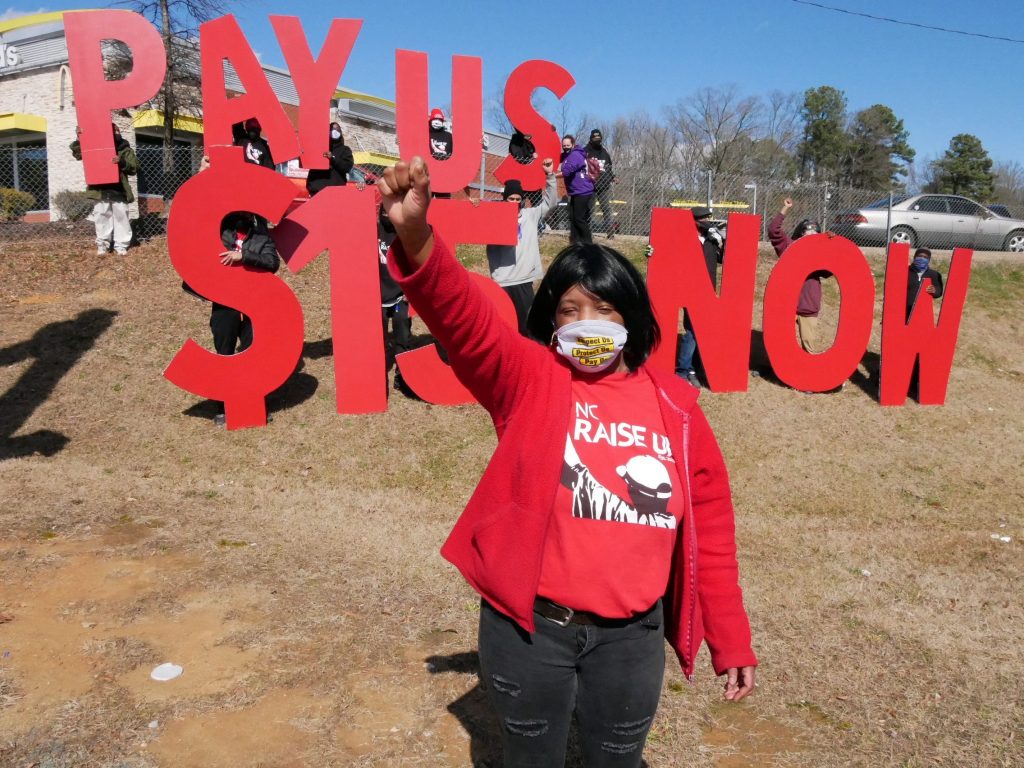- The $7.25 federal minimum wage is now 13 years old after last being raised in July 2009.
- The value of the minimum wage has fallen by 40% since the 1960s, according to an economist.
- $7.25 in July 2009 would be worth around $10 now after adjusting for inflation.
There comes a time when someone — or something — undergoes a big transition: Becoming a teenager.
For humans, it's often a time of celebration and change. But for policy, it means things haven't changed in along time. And it's a milestone the $7.25 federal minimum wage just reached.
The last time it was raised was when Joe Biden was vice president. Now, despite Biden's own pledge to get the wage to $15, and a dashed Democratic effort to do just that, today marks the 13th anniversary of the $7.25 minimum wage.
"It is very frustrating to me that Congress and many state legislatures — but not all — have effectively abandoned their commitment to paying decent wages," Ben Zipperer, an economist specializing in the minimum wage and low-wage labor markets at the left-leaning Economic Policy Institute, told Insider.
The stagnant minimum wage is the result of Congressional inaction, gridlock, and disagreement. Democrats led by Bernie Sanders mounted the last full-scale attempt in March 2021 to get the wage to $15. They included that pay increase in the Biden stimulus law, but it was knocked out by a top Senate official for violating procedural rules. Then Democrats' efforts were ultimately tanked by eight members of their own party. If enacted, that increase would have meant raises for 32 million people by 2025 — and would have disproportionately benefited workers of color and women.
Democrats have all but abandoned efforts to raise the minimum wage for the time being.
Now, as prices continue to rise, the minimum wage's value is at its lowest in decades
The following chart highlights the real value of the minimum wage. That is, it shows the federal minimum wage over the past several decades after being adjusted for inflation to June 2022 dollars using the Consumer Price Index.
Based on the chart, $7.25 in July 2009 — the month of the last time the minimum wage was increased — would be about $9.97 in June 2022 dollars using seasonally adjusted CPI. So, the $7.25 minimum wage is worth about 27% below its purchasing power in July 2009, as seen in our calculation and an analysis from the Economic Policy Institute.
Zipperer said that the minimum wage has fallen by about 40% since the 1960s, "even though we're a much richer country than we were over 50 years ago, and workers are more than twice as productive as they were 50 years ago."
And, as anyone who's tried to buy anything recently knows, things are expensive right now. Inflation reached a 41-year high in June, driven in large part by spiking energy prices. But the cost of groceries and rent keep climbing as well.
"I'm living somewhere with someone, because I can't afford my rent, and $15 would help," Gail Rogers, a 62-year-old head cashier at McDonald's in Tampa, Florida, and a leader with the worker movement Fight For 15, told Insider. She said she makes $11 an hour. Extra income could help her pay her insurance, doctor's co-payments, and rent. "It would help, but it still is not enough."
While market pressures have pushed wages up, much of that is being eaten by inflation.
"There's a reason we have minimum pay standards and that's because we still have a crisis of low pay in this country, even with recent wage gains," Zipperer said.
Many states and cities have taken matters into their own hands
Three states, Washington D.C, plus over a dozen cities raised their minimum wage this month. But 20 others still have their minimum wage at the federal rate.
One of those states is New Hampshire. "It's not feasible for people to live on that wage," Rebecca Hamilton, co-owner of W.S. Badger Company in New Hampshire, said. She pays a minimum wage of $15 an hour, and sees even that as "insufficient."
Without a wage standard, states like New Hampshire may also see labor shortages worsen, as workers have to leave to make more.
"We've historically had an issue with young people leaving New Hampshire and finding work elsewhere," Hamilton said. "If you start your first job at minimum wage, and you're able to get $15 an hour over in Massachusetts, people are going to leave New Hampshire to go to Massachusetts."
And Americans support a higher federal minimum wage. Even in GOP-dominated Florida, voters in 2020 threw their support behind Donald Trump — and a $15 minimum wage.
The $15 minimum wage also has one very prominent supporter: the president. But while Biden has spoken about the need for a $15 wage on several occasions, he's done little to prod Congress on taking action.
"I've had a one on one talk with president Biden and at the time he was very, very, very concerned, and he was very excited to know that we were out fighting for $15 and a union, and he supported us," Rogers said, referring to a conversation she had with him while he was on the campaign trail.
She was thankful for the opportunity and the time that he gave her, but wants him to know that it's time to act.
"We need to hear more coming from him with pushing the issue. These American people need more money."
